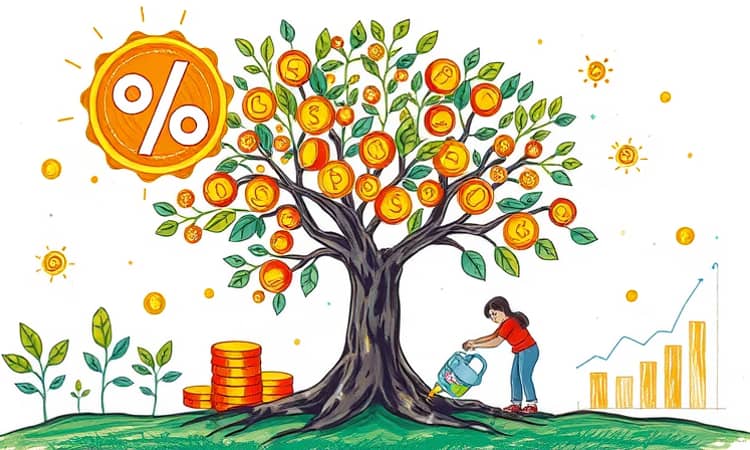A deep dive into how interest shapes your financial journey and empowers smart decisions.
What is Interest?
Every day, your money works behind the scenes. At its core, interest is the lifeblood of modern finance, defining the cost of borrowing and the reward for saving.
“Interest is either the cost of borrowing money or the reward for saving or investing it — depending on which side of the transaction you’re on.” This simple concept underpins mortgages, savings accounts, credit cards, and more.
Types of Interest
Not all interest is created equal. Understanding the distinction can transform your approach to loans and investments.
“Compound interest is when interest is added to your deposit, then interest is calculated on that new higher amount.”
- Simple Interest: Calculated only on the original principal, using the formula Principal × Rate × Time.
- Compound Interest: Calculated on the principal and on accumulated interest, accelerating growth over longer periods.
How Banks Use Your Money and Set Rates
When you deposit funds, you entrust banks to deploy that capital elsewhere. Banks pay you interest while charging borrowers a higher rate, capturing the margin as profit.
Behind the scenes, central bank decisions on base rates guide this process. When central banks raise their benchmark rates, commercial banks follow suit, offering higher savings yields and charging more for loans.
How Interest is Calculated: APY and APR
Banks present savings and borrowing rates differently. Savers see an Annual Percentage Yield (APY), which accounts for compounding. Borrowers, however, encounter an Annual Percentage Rate (APR), typically excluding compounding fees.
Imagine depositing $1,000 at 2.5% APY. With monthly compounding, you earn a bit more than $25 over a year because each month’s interest adds to the balance on which the next interest calculation is based.
On the flip side, borrowing $1,000 at 6% APR means you pay 6% of the principal each year, without the accelerating effect of compounding interest on unpaid balances.
Current Interest Rate Landscape
As of June 2025, savers and borrowers face divergent realities. After years of rock-bottom central bank rates, the tide has shifted.
This contrast highlights how savers can finally earn meaningful returns, while borrowers face steeper costs than in recent years.
How Interest Rates Affect Saving and Borrowing
When interest rates climb, saving becomes more attractive. A higher APY means your money compounds faster, boosting long-term growth.
Conversely, high rates can deter excessive borrowing. Mortgages, auto loans, and personal credit lines grow more expensive, which may slow big-ticket purchases but also helps curb inflation by cooling demand.
Inflation and Real Returns
Nominal interest rates tell only half the story. Inflation erodes purchasing power, so the true measure of gain is the real interest rate: Nominal Rate minus Inflation Rate.
For example, a 5% APY in a 4% inflation environment yields only a 1% real return. Sometimes, inflation can outpace nominal rates entirely, leaving savers with negative real returns.
Economic Impacts of Changing Interest Rates
Interest rates are powerful levers. Central banks raise rates to cool overheated economies and fight inflation, making credit more expensive and slowing spending.
When rates fall, borrowing costs drop. Consumers and businesses borrow more freely, fueling investment, hiring, and economic expansion. Understanding this cycle helps you anticipate market trends and position your finances accordingly.
How to Maximize Your Returns and Minimize Costs
Smart strategies can tilt the balance in your favor, whether you’re saving or borrowing.
- Compare offers across institutions to find the best APY or APR available.
- Seek high-yield savings accounts or CDs for better returns on your idle cash.
- Lock in fixed rates on long-term loans if you expect rates to rise further.
- Prioritize paying off high-interest debt to free up more money for saving.
- Monitor inflation data to align your goals with real purchasing power.














